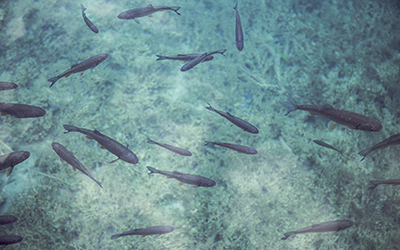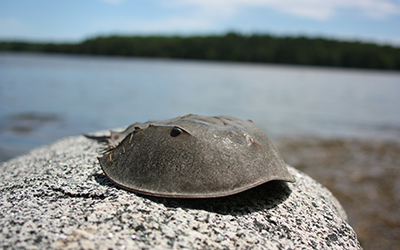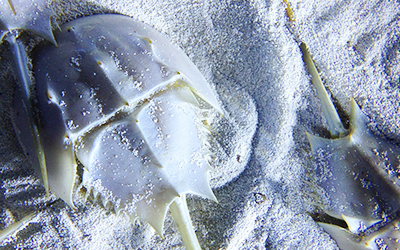Summary Project
SUMMARY
The precise knowledge of species distribution is a key point for conservation strategies, especially when the focal species are invasive, threatened or endangered. However, its detection may be extremely difficult in many degraded tropical environments. To overcome this problem, eDNA barcoding can be used in order to detect species through extraction and analysis of genetic material obtained directly from environmental samples. Environmental DNA (eDNA) metabarcoding has emerged as a potentially powerful tool to assess aquatic community structures. In-fact the method has hitherto lacked field tests that evaluate its effectiveness and practical properties as a biodiversity monitoring tool. In these contexts, this study will be focused on the ability of eDNA metabarcoding to reveal fish community structures in a brackish water Balok river. The Sungai Balok is one of the potential rivers in Kuantan that has been affected by the human activities around the river vicinity mainly by the industrial estate in Gebeng and indirectly affected by the bauxite mining in Bukit Goh, Kuantan. Based on above perspectives the aim of this study was on DNA persistence in water in order to genetic monitoring of fish species the Balok river. The samples of sea water will be collected from few locations from upstream to downstream during monsoon and non-monsoon to investigate overall distribution of fishes throughout the year. Water filtration to assess eDNA materials will be carried out. PCR amplification of the target 12S rRNA gene will be conducted. Purified pools of PCR products will be used for gene library preparation. High-throughput sequencing using Illumina sequencer. The results of eDNA will be reassigned to a higher or lower taxonomic level. The finding from this new environmental DNA approach in Malaysia could assess the genetic diversity of the fishes in the Balok River in Kuantan, Pahang and other degraded rivers in Malaysia

SUMMARY
Nemipterus furcosus is one of the important and widely captured fish in Malaysia. Malaysian people prefer this fish due to its soft and delicately flavoured flesh. It is one of the most important target marine fish for Malaysian fisherman. Therefore, the production of this fish is decreasing very rapidly in the Malaysian coastal water. This puts an increasing demand on the study and management of this fish in Malaysian water. Unfortunately, information regarding proper management guideline for this fish is lacking. However, adequate information about population parameters such reproductive biology, growth, mortality and recruitment of this fish is prerequisite to prepare management guidelines. Unfortunately, such information for this fish is lacking particularly in the Malaysian water. Therefore, objectives of the proposed study are to (i) estimate growth, mortality and recruitment of N. furcosus population using mathematical model, (ii) know the size sexual maturity, oocyte diameter and reproductive cycle, and (iii) develop guidelines for a proper management of Nemipterus furcosus stocks at the East and West coasts of Peninsular Malaysian. For this study, the length-frequency data of Nemipterus furcosus will be recorded monthly from the commercial catches of several fish landing centres (LKIM) from east and west coasts of Malaysia Peninsula. The various modelling tools will be used to assess population parameterst of this fish. The size of sexual maturity will be determined by plotting total length against gonadosomatic index (GSI). Reproductive cycle will be determined using monthly GSI plot. The diameter of oocytes was measured using an Nikon V-12B view II digital camera mounted on a computer and software. Based on these results, a management guideline particularly minimum permissible size of catch, time of year when catching this fish should be prohibited, mesh size of net and total catch time/year will be develop for sustainable production of this fish.

SUMMARY
Recent information on the wild horseshoe crab in Malaysia shows that the population in the natural habitat is dwindling due to various anthropogenic activities primarily including habitat degradation and alteration of nursery beaches for various fishery and recreational activities. Various measures have been taken to ensure the future sustainable fishery of this living fossil by adopting captive breeding practice and invitro fertilization of eggs. However, due to the recent fatwa ‘islamic verdict’ in 2010 and high market demand, the female crabs are highly harvested from Malaysian waters and even exported to neighboring countries such as Thailand. This in turn increased pressure on wild population size and sex ratio. Hence, present study was aimed to study their population structure and subdivision in Malaysian waters by conventional and genetic approach and their by ensuring sustainable fishery practice in Malaysian waters. Apart from this approach, various other measures and studies will be conducted to conserve horseshoe crabs fishery in Malaysia. Horseshoe crab samples will be collected from various nesting grounds and wild habitat and their population size will be determined. Tor the conservation practice, invitrofertilization techniques and its reliability and effectiveness will be determined. This practice can be continuously carried out to manage the sustainable fishery practice of horseshoe crab in Malaysia. It will also be a way forward for developing Artificial sanctuary for this exotic species.

SUMMARY
Horseshoe crab population is facing serious problem in recent years due to habitat degradation, pollution, fishery pressure on natural stock etc. This will have apparent effect on their genetic diversity and inter genetic relationships among populations of a species. In this study we will examine phylogeographic relationships and population genetic structure of Southeast Asian horseshoe crab (Tachypleus tridentatus) found throughout Malaysia. By comparing genetic relationships and population structure, we can uncover deep historical patterns resulting from major geological events such as mountain uplift, sea level fluctuation, and climatic shifts. Understanding how species responded to such events in the past, may help us to predict how they might respond to changes in the future. Thus, there is a need to conduct a study on nested hierarchical analyses to investigate the genetic structure of Malaysian horseshoe crab (T. tridentatus) along the full geographic range at different scales. Thus the objectives of this study includes 1.to uncover historical dispersal patterns of horseshoe crabs in Malaysian waters, 2. to investigate population genetic structure of horseshoe crabs and 3. to identify phylogenetic relationship among their conspecifics. Mitochondrial 16sRNA and AT-rich region will be amplified with set of species specific primers and gene sequencing will be carried out. Overall, the output of this study will be informative for future commercial use, conservation and stock management strategies, breeding program and government policies for our horseshoe crabs population.
